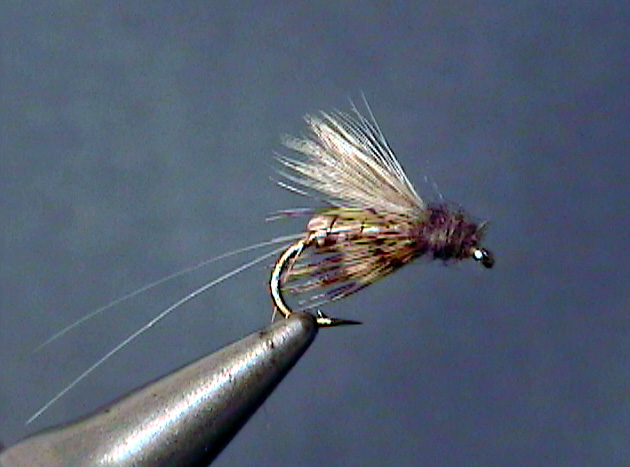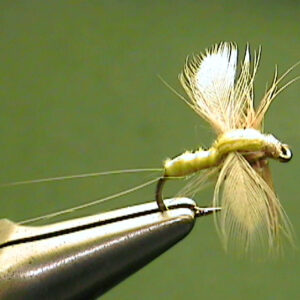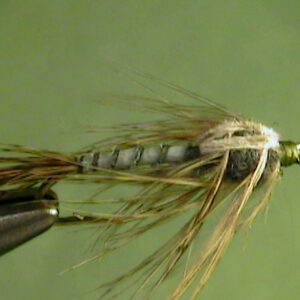Hook Size: 14
The Slate Dun mayfly emerger is a trout fly that imitates the nymph changing to a dun. It looks a little more like the nymph than the dun. It imitates the nymph accenting from the bottom to the surface of the water. The CDC wing should float flush with the surface skim.
As mentioned in the The Slate Dun Emerging Adult section the Epeorus
longimanus emerges in calmer, slower moving water adjacent to its normal fast
water habitat. In fast water, or pocket water, this usually means in the calmer
areas behind rocks or boulders. It can also be calmer pockets on the outside
edges of runs and riffles especially if they are next to the banks of the stream.
In some cases the Slate Duns live and emerge in smooth, fast water streams. In
these streams they will move wherever they can find calmer or slower moving
water.
Presentation:
In most cases, an up or up and across presentation is the best approach to use.
You want to place the “Perfect Fly” Slate Dun near the ends of the fast runs and
riffles. Even though they emerge in the slower side of the current seams, they will
usually get caught in the fast water before they are able to depart the water.
In those rare cases where these mayflies hatch in fast moving slick or smooth
water, you may want to use a down stream, or a down and across presentation.
This way the fly will get to the trout before the tippet or leader. If you miss the
location of a rising trout in this manner, you want to make certain the trout
doesn’t have the opportunity to see your fly line. That will spook the trout for sure.
Copyright 2013 James Marsh



